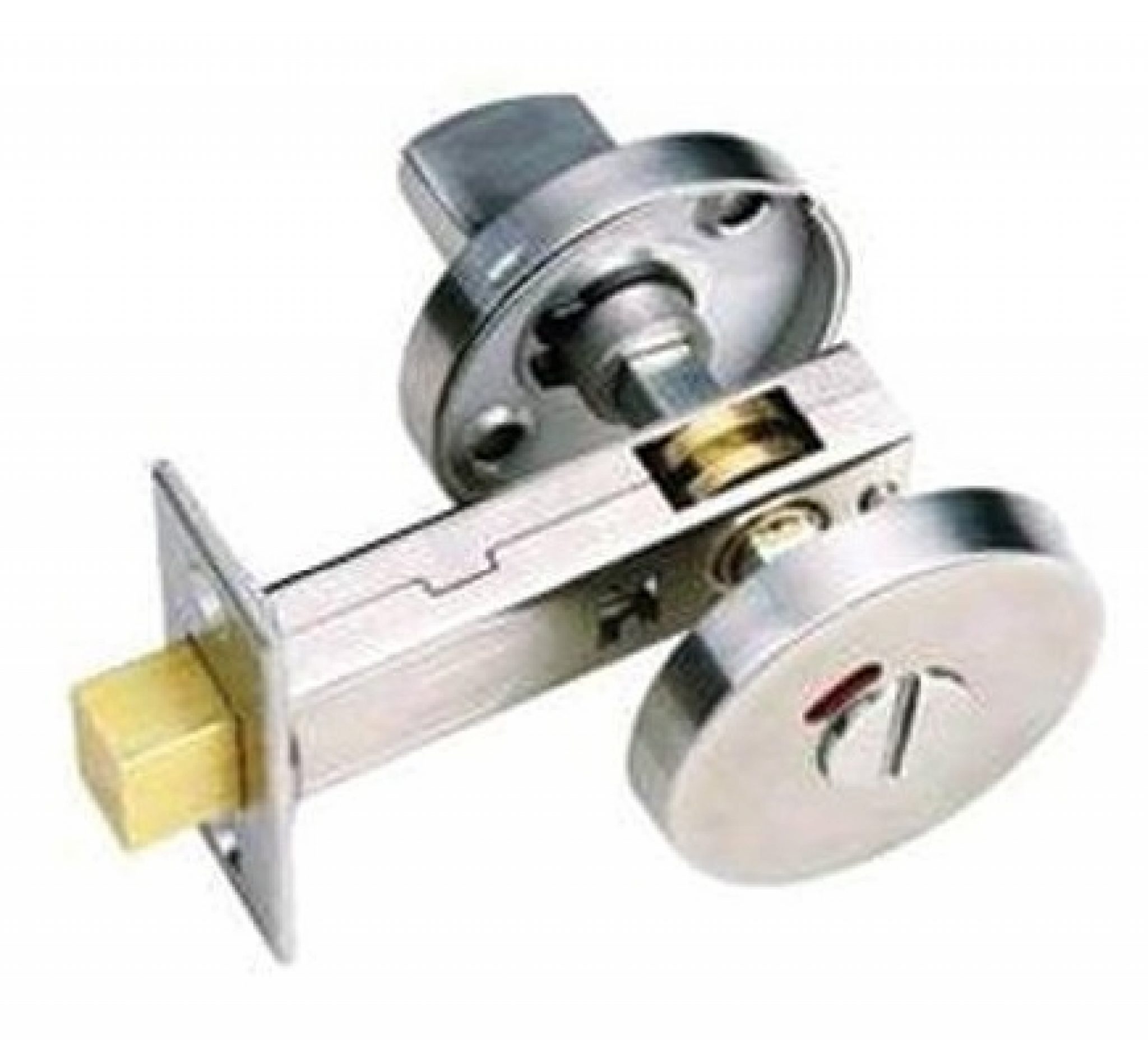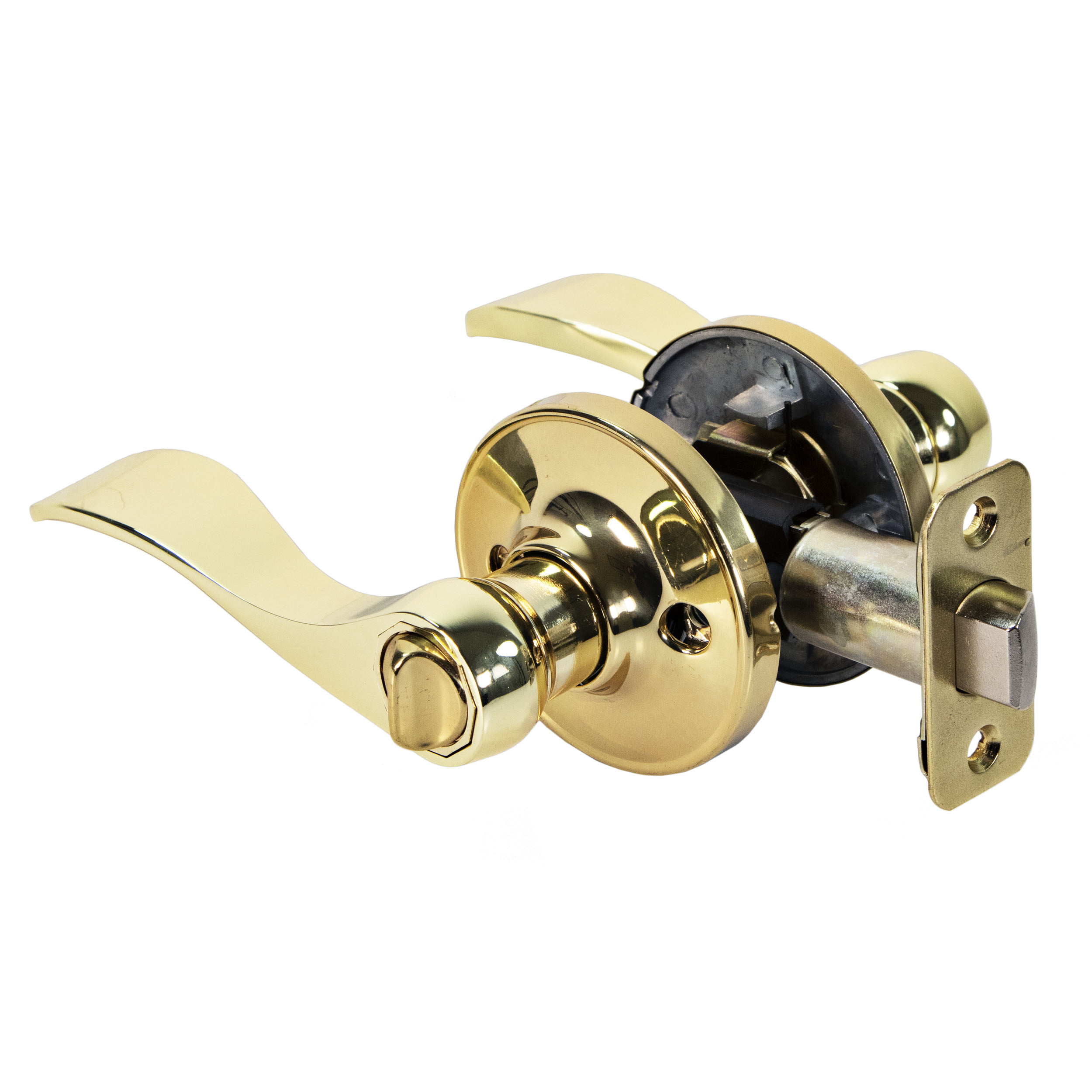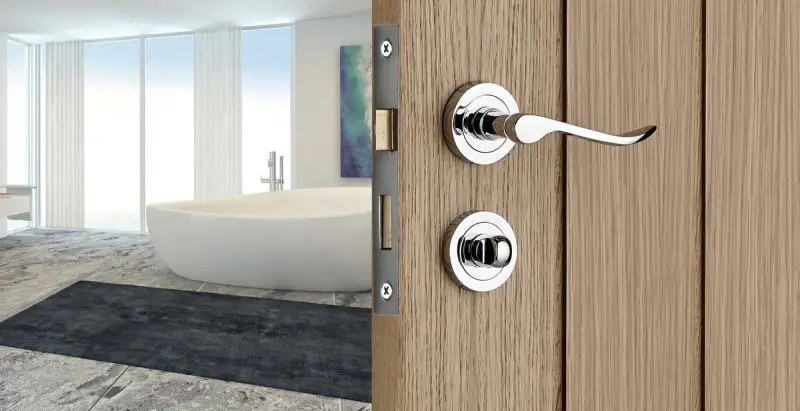Types of Internal Bathroom Door Locks

Internal bathroom door locks provide privacy and security, ensuring a private space within your home. There are various types of locks available, each with unique features and advantages. This guide will explore the common types of internal bathroom door locks, their pros and cons, and popular brands and models.
Privacy Locks
Privacy locks are the most common type of internal bathroom door lock. They offer a simple and affordable solution for privacy, allowing you to lock the door from the inside.
Privacy locks operate using a latch that engages with a strike plate on the door frame. They are typically unlocked with a simple turn of the knob or lever handle. These locks are ideal for bathrooms where security is not a primary concern, as they can be easily opened from the outside with a credit card or other thin object.
- Pros:
- Simple and affordable
- Easy to install and operate
- Provide basic privacy
- Cons:
- Not very secure, easily bypassed
- Limited security features
Popular Brands and Models:
* Schlage Privacy Lever Handles: Schlage is a renowned brand known for its durable and stylish hardware. Their privacy lever handles are available in various finishes and styles to match any bathroom decor.
* Kwikset Privacy Lever Handles: Kwikset offers a wide selection of privacy lever handles at affordable prices. Their handles are known for their ease of use and reliability.
* Baldwin Privacy Lever Handles: Baldwin specializes in high-end hardware, and their privacy lever handles feature elegant designs and superior craftsmanship.
Deadbolt Locks
Deadbolt locks provide a higher level of security than privacy locks. They use a bolt that extends into the strike plate when locked, making them more difficult to force open. Deadbolt locks are often used in conjunction with privacy locks for enhanced security.
- Pros:
- Higher level of security than privacy locks
- More difficult to force open
- Can be used with privacy locks for enhanced security
- Cons:
- More expensive than privacy locks
- Can be more difficult to install
Popular Brands and Models:
* Kwikset Deadbolt Locks: Kwikset offers a range of deadbolt locks with various features, including keyless entry and smart lock capabilities.
* Schlage Deadbolt Locks: Schlage’s deadbolt locks are known for their durability and security features. They offer a wide variety of styles and finishes.
* Yale Deadbolt Locks: Yale is a leading brand in the security industry, and their deadbolt locks are known for their high-quality construction and advanced security features.
Keyed Locks
Keyed locks are similar to deadbolt locks but require a key to unlock them from the outside. They provide a higher level of security than privacy locks as they cannot be easily opened without the key. Keyed locks are often used in bathrooms where additional security is desired, such as in shared spaces or guest bathrooms.
- Pros:
- Higher level of security than privacy locks
- Requires a key to unlock from the outside
- Suitable for shared spaces or guest bathrooms
- Cons:
- Can be more expensive than privacy locks
- Requires carrying a key
Popular Brands and Models:
* Baldwin Keyed Deadbolt Locks: Baldwin’s keyed deadbolt locks offer a combination of security and elegance. They are available in various styles and finishes to complement any bathroom design.
* Emtek Keyed Deadbolt Locks: Emtek specializes in high-quality hardware with a focus on security and craftsmanship. Their keyed deadbolt locks are known for their durability and strength.
* Weiser Keyed Deadbolt Locks: Weiser offers a wide selection of keyed deadbolt locks at competitive prices. Their locks are known for their ease of installation and reliability.
Installation and Maintenance

Installing an internal bathroom door lock is a straightforward process that can be completed by most homeowners with basic DIY skills. This section will provide detailed steps for installing and maintaining these locks to ensure optimal performance and longevity.
Tools and Materials, Internal bathroom door locks
The tools and materials required for installing an internal bathroom door lock vary depending on the type of lock and the door’s construction. However, a basic toolkit will usually include:
- Screwdriver (Phillips and flathead)
- Drill with appropriate bits
- Tape measure
- Pencil
- Level
- Hammer
- Safety glasses
In addition to the tools, you will need the following materials:
- Internal bathroom door lock
- Strike plate
- Screws
Installation Steps
The following steps provide a general guide for installing an internal bathroom door lock.
- Remove the existing lock (if applicable): If there is an existing lock, remove it by unscrewing the screws holding the lock and strike plate.
- Prepare the door and frame: Use a pencil to mark the desired location for the new lock on the door and the corresponding position for the strike plate on the door frame.
- Install the lock: Attach the lock to the door using the provided screws. Ensure the lock is securely fastened and aligned with the door handle.
- Install the strike plate: Attach the strike plate to the door frame using the provided screws. Ensure the strike plate is aligned with the lock’s latch.
- Test the lock: After installation, test the lock to ensure it functions correctly. The latch should engage smoothly with the strike plate, and the door should close securely.
Adjusting the Latch and Strike Plate
If the latch does not align properly with the strike plate, you can adjust the latch or strike plate to ensure a smooth and secure closure.
- Latch adjustment: Most internal bathroom door locks have adjustable latches. Use a screwdriver to adjust the latch’s position until it aligns with the strike plate.
- Strike plate adjustment: If the latch is correctly positioned but still doesn’t engage with the strike plate, you can adjust the strike plate. Use a hammer and a punch to adjust the strike plate’s position until it aligns with the latch.
Maintaining the Lock
Regular maintenance can help prolong the life of your internal bathroom door lock.
- Lubrication: Apply a light lubricant, such as graphite powder or dry Teflon spray, to the lock’s moving parts, including the latch, the handle mechanism, and the keyhole. This will help reduce friction and prevent wear and tear.
- Cleaning: Clean the lock regularly with a soft cloth and a mild cleaning solution. Avoid using harsh chemicals or abrasive cleaners, as these can damage the lock’s finish.
Security and Privacy Considerations: Internal Bathroom Door Locks

When choosing an internal bathroom door lock, it’s essential to consider the level of security and privacy you require. A well-chosen lock can provide peace of mind, knowing that your personal space is protected. The type of lock mechanism directly impacts the security and privacy it offers.
Security Levels of Different Lock Mechanisms
The security of an internal bathroom door lock is determined by the type of lock mechanism used. Some locks are more secure than others, offering varying levels of protection against unauthorized entry. Here’s a breakdown of common lock mechanisms and their security features:
- Privacy Locks: These locks are the most basic type, offering a simple latch that can be easily opened from the outside using a tool or a simple push. Privacy locks are ideal for situations where a basic level of privacy is required but security is not a primary concern.
- Passage Locks: Passage locks are similar to privacy locks but have a more robust latch that is harder to force open. They are often used in bedrooms and other areas where a slightly higher level of security is desired.
- Deadbolt Locks: Deadbolt locks are considered the most secure option for internal bathroom doors. They have a solid metal bolt that extends into the door frame, making them much more difficult to force open. Deadbolt locks are often used in areas where security is paramount, such as bathrooms with valuable possessions or sensitive documents.
Privacy Considerations for Internal Bathroom Door Locks
Privacy is a key consideration for internal bathroom door locks. Choosing a lock that provides adequate privacy ensures that you can enjoy your time in the bathroom without the risk of unexpected intrusions. Here are some tips for enhancing privacy:
- Choose a lock with a high level of privacy: This means selecting a lock with a mechanism that is difficult to open from the outside, such as a deadbolt or a high-quality privacy lock with a robust latch.
- Install the lock securely: Ensure that the lock is properly installed and secured to the door and frame. A poorly installed lock can be easily compromised, reducing the level of privacy it provides.
- Consider using a lock with a key: A lock with a key provides an additional layer of security and privacy, as it prevents anyone without the key from entering the bathroom.
Tips for Enhancing the Security of an Internal Bathroom Door Lock
To further enhance the security of an internal bathroom door lock, consider these additional measures:
- Install a strike plate: A strike plate is a metal plate that is installed on the door frame to reinforce the area where the latch or bolt engages. This makes it more difficult to force open the door.
- Use a door chain: A door chain allows you to open the door slightly to see who is outside without fully opening it. This can be helpful in situations where you are not expecting visitors or feel uncomfortable opening the door fully.
- Consider a smart lock: Smart locks can be controlled using a smartphone app, allowing you to lock and unlock the door remotely. They can also provide notifications when the door is opened or closed, enhancing security and peace of mind.
While internal bathroom door locks are essential for privacy, they can sometimes feel a bit outdated. If you’re looking for a more modern and stylish solution, consider a single barn door for bathroom. Not only do they look great, but they also save space and can be easily customized to match your bathroom’s décor.
And while they don’t offer the same level of security as traditional locks, they can still provide a sense of privacy and separation.
Internal bathroom door locks offer a sense of privacy, but sometimes the layout of your bathroom can make a traditional inward-swinging door impractical. If you’re facing space constraints, you might wonder, can a bathroom door swing out ? It’s a valid question, and the answer often depends on the size and shape of your bathroom.
If you opt for an outward-swinging door, you’ll need to ensure it doesn’t obstruct any fixtures or create a tripping hazard. No matter which way your bathroom door swings, a sturdy lock is essential for peace of mind.